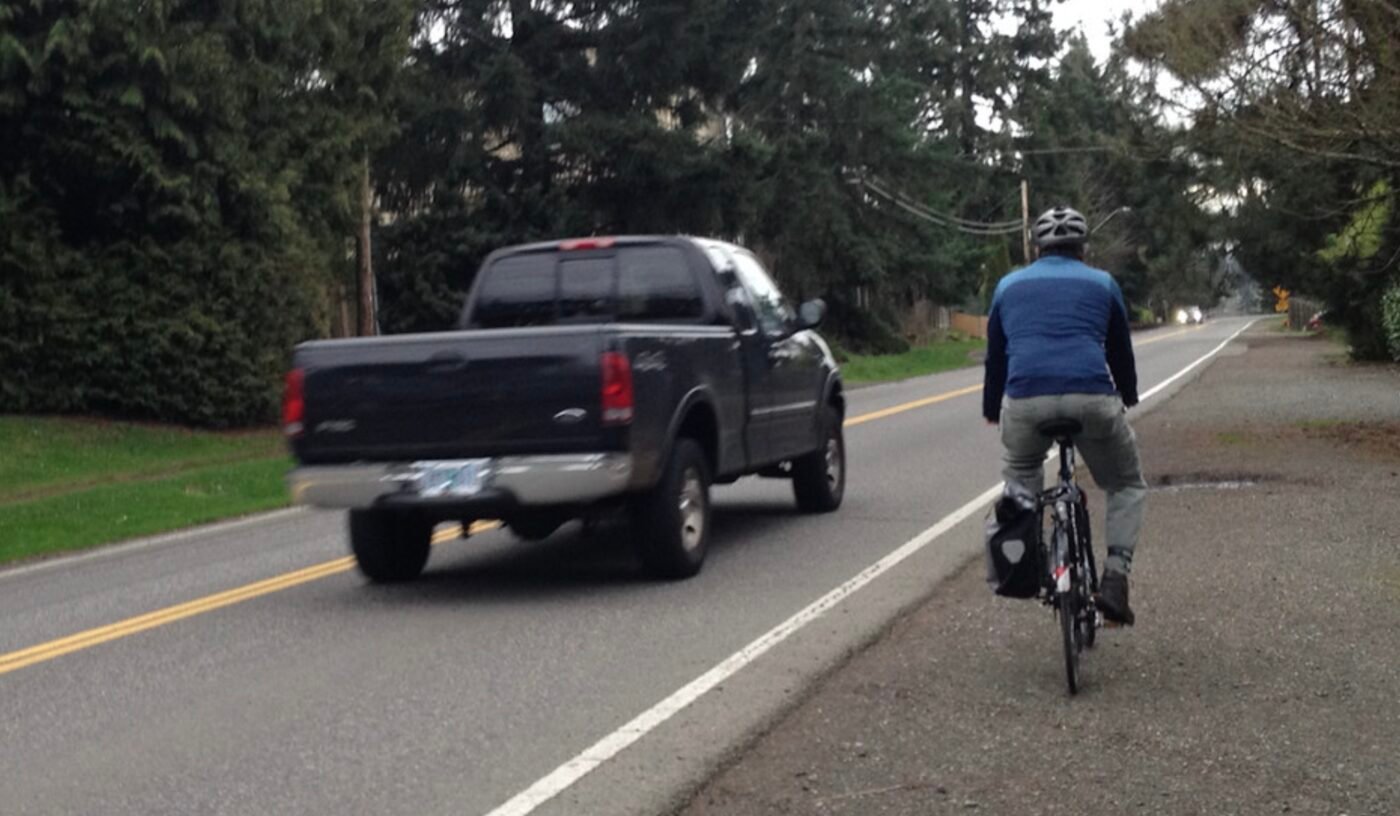
New details have emerged this morning of a nascent infrastructure funding effort that aims to quench the thirst for sidewalks in east and southwest Portland.
As I shared Thursday, District 4 Councilor Mitch Green and District 1 Councilor Loretta Smith have seized on a shared interest in transportation infrastructure funding reform and a desire to deliver popular investments to create a new way to get more sidewalks built. They call it the “Sidewalk Improvement and Pavement Program” or SIPP. We’ve learned more details about the policy package in documents filed to the City Council T & I Committee website and comments made by Green on social media this morning.
According to Green, he and Smith have already solicited recommendations from Portland Bureau of Transportation staff. “From PBOT’s recommendations to Councilor Smith and me, we are considering a range of treatments in areas with constraints or opportunities where pedestrian facilities other than sidewalks are better for the context,” Green shared on Bluesky this morning in response to a post by BikePortland. “We’re generating input for this emerging policy concept for going bigger on sidewalks and paths and how we’re funding it. Potholes are included too.”
More details on the SIPP can be found in the draft resolution language posted to the T & I Committee agenda. The draft language gives us our first clues about how councilors will frame the program and what new revenue will be focused on. The SIPP, “aims to address sidewalk and pavement deficiencies, create safer pedestrian facilities, and improve roadway conditions.” Why will it focus on districts 1 and 4 only? “Of all streets lacking proper sidewalks or pedestrian access, over half of those streets are located in East Portland and Southwest Portland,” reads the draft resolution. :”Prioritizing investments in Districts 1 and 4 will ensure more equitable access to vital pedestrian pathways, enhanced climate resilience, and increased safer road conditions for all residents.”
An impact statement section of the resolution states that, “The City has deferred maintenance on our streets and sidewalks for many years – and far too long… While Portland’s central core benefits from walkable neighborhoods with good sidewalks, most streets in Districts 1 and 4 lack sidewalks entirely.”
As has already been reported by Willamette Week, funding for the SIPP could come from a variety of sources including: issuing bonds and allocating funds allocated to PBOT for sidewalk construction and improvements; federal funding from the Safe Streets for All (SS4A) program; funding from the Oregon Department of Transportation (ODOT); and funding from the Portland Clean Energy Community Benefits Fund (PCEF).
The resolution also lists anticipated benefits of the program. Beyond the usual like safety and environmental benefits, the councilors say new and improved sidewalks could be an engine for economic growth, job creation, and “opportunities to demonstrate the use and effectiveness of new and emerging green technologies and sustainable materials in transportation networks such as solar sidewalks and green cement.”
It’s an ambitious effort from two new councilors who say it, “will establish a system-wide effort that could serve as a model for similar construction and renovation projects across the City of Portland.”
If passed by the full council, the resolution would direct PBOT to explore the “full suite” of funding options and initiate a public engagement process that would result in a four-year project list complete with an implementation schedule and budget. In addition to the SIPP policy package, councilors Smith and Green want to pass a separate ordinance that would develop, “a jobs pipeline connecting existing internship, apprenticeship, and other training and education programs to good jobs that SIPP will create.”
A price tag for the program isn’t included in the draft resolution, but I’ve been told a starting point would be $100 million. How many miles of sidewalks that could create depends on many factors — from topography to permitting. The resolution does include a timeline: it’s expected to take about four years before it’s fully baked and sidewalks are ready to be built.
Stay tuned for Monday’s T & I Committee meeting where the SIPP will get its first hearing. You can read the resolution and submit written testimony here.

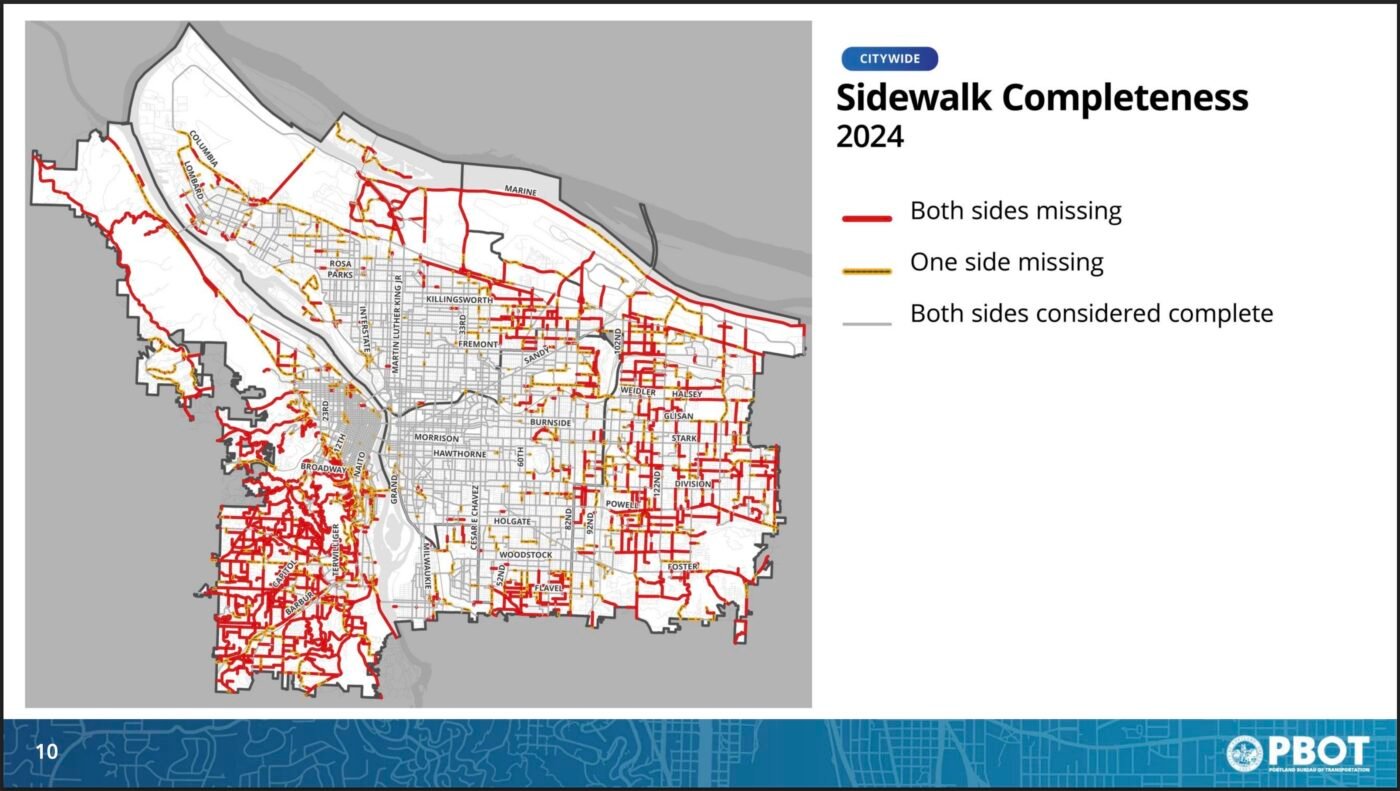
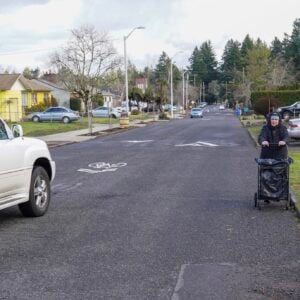

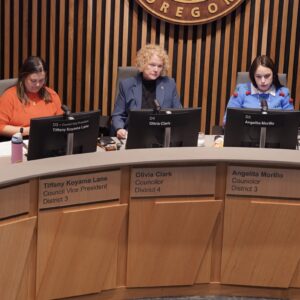
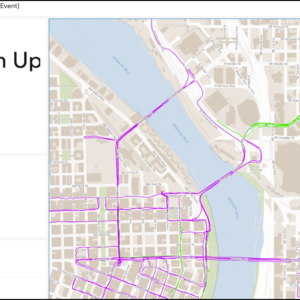
Thanks for reading.
BikePortland has served this community with independent community journalism since 2005. We rely on subscriptions from readers like you to survive. Your financial support is vital in keeping this valuable resource alive and well.
Please subscribe today to strengthen and expand our work.
SW Scholls Ferry Road needs it in a joint project with Multnomah County. It has not been repaved between Highway 26 and SW Raleighwood Lane since at least the 1990s and it is a very busy road.
Skyline Boulevard between Sylvan and Highway 26 too (I believe this is yet another neglected MultCo road, just like Scholls Ferry). It’s incredibly unsafe to walk or bike on right now, but there are no feasible alternate routes without going miles out of the way.
At least in East Portland there are usually some alternate routes with sidewalks, and the major streets mostly have sidewalks at least on one side. In Southwest it’s usually the major streets that have no sidewalks and there are no other routes to take, meaning that it’s straight-up impossible to safely walk anywhere.
Is that $100 million going to fund the entire project and suite of needed improvements, or it just going to fund the concrete and expect the stormwater bureau to pick up the tab for the drainage needs? Without adding stormwater improvments, some of those project may never get done.
It’d be great to see sidewalks finally being built in areas where people have been asking for them.
Side criticism–PBOT should stop calling that map a “Sidewalk Completeness” map. It’s totally misleading–implying that any street without sidewalks on both sides has incomplete sidewalks.
In reality, to be “complete”, the sidewalk network does NOT require sidewalks on both sides of every street, or even on either side of many streets. Many of the safest, most walkable streets have no sidewalks, and adding them would wreck them as pedestrian-oriented streets.
On many streets, it would be cheaper and better to create the conditions where sidewalks aren’t needed, than to build sidewalks.
In my own neighborhood, streets on the map are shown as not having “complete sidewalks” even when the side of the street without them is a traffic island in the middle of the highway; or an inaccessible side with no development, no connections, and no reason to ever walk there; dead ends where sidewalks would ruin the pedestrian experience, etc.
Given that there will be public input, there’s so much demand for sidewalks where they ARE needed, and a limited budget, I’m not worried that sidewalks people don’t want and that don’t make sense will be built. But I’m wary of anything that implies that more sidewalks are always better, and the map title plays into that fallacy.
They never have a shortage of funding for ever larger roads and freeways…
But no funding for hov lanes or sidewalks…
All SW needs is about 1000 carefully positioned children’s deaths https://www.kgw.com/article/news/girls-death-leads-to-new-sidewalks-in-east-portland/283-71835686
Honestly, adding a bond for sidewalks just feels like another tax that property owners have to deal with. It’s only going to drive up housing costs and push people to move to places with lower taxes. I mean, we’re already seeing this happen! The city council really needs to think about this whole “doom loop” with taxation before they decide on adding more taxes. It’s getting tough out here!
https://www.oregonlive.com/business/2025/02/economist-warns-of-portland-doom-loop.html
And one has to really wonder what are we getting for the exorbitant taxes we pay now?
Those are just the ones that came immediately to mind.